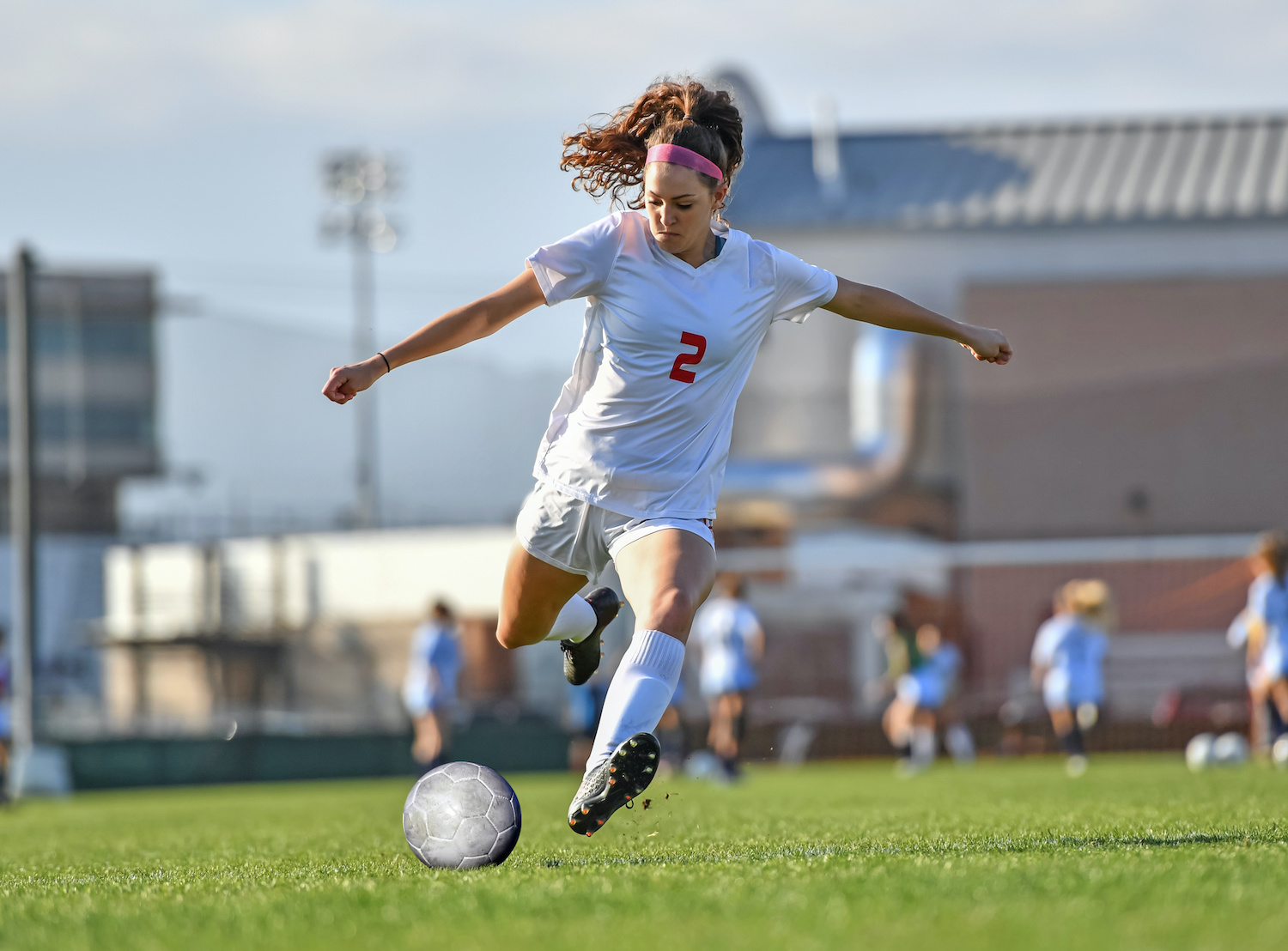Girls are more likely to tear an ACL

I marvel at the abuse my daughters’ bodies take on the field, and I am ever impressed by all female athletes, because, as a non-athlete middle aged woman, everything they do looks really painful. If I bang my elbow while reaching for something, I need a nap, an ice pack, and a margarita. If I trip on the stairs, I need a massage and a couple days to recover. Girls that play are being tackled, kicked and forced to the ground, they are getting slashed with sticks and banging heads when going for a ball. And, they continue to play — battered and bruised and fierce. With three girls who spend a lot of time in cleats, I have learned to not gasp at every collision and to see them as athletes, not fragile females.
But, there is one area of risk where our girls are particularly fragile and vulnerable, and it is important we are aware. Girls are 4-5 times more likely to sustain a non-contact ACL tear than boys. The ACL (anterior cruciate ligament) is a stabilizing ligament in the knee. It connects your femur (thigh bone) to your tibia (shin bone.) It can be torn from a collision, but also from sudden stops or turns, which even as a non-athlete, I know stopping and turning are things you have to do on a field. Many tears are serious enough to require surgery, and the recovery is a long process, often keeping players sidelined for many months.
Why do girls tear this ligament more? There are theories, and the truth probably is a combination of all these. Female hormones affect the strength of ligaments, especially during menstruation. Female hips are wider, changing the angle where the bones connect, placing more stress on the knee. More recent studies points to the different ways boys and girls actually move when running and jumping.
Why does it matter? More focus needs to be placed on proper technique, stretching, strengthening and adequate rest for all our young athletes, but especially when it comes to the knees, for girls. There are wonderful things about playing sports, but being an athlete is not without significant risk. In what other circumstance would a parent cheer while their child’s physical wellbeing is in danger. We tell them to be careful at every turn, but when they step on a field or a court, we encourage them to be aggressive and even careless with their bodies. We need to at least make sure they are properly prepared, and injury prevention is a priority.
To learn more about what kinds of training can reduce the risk of knee injury, click here.




















